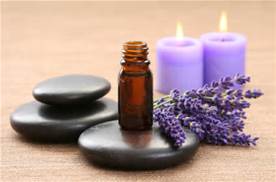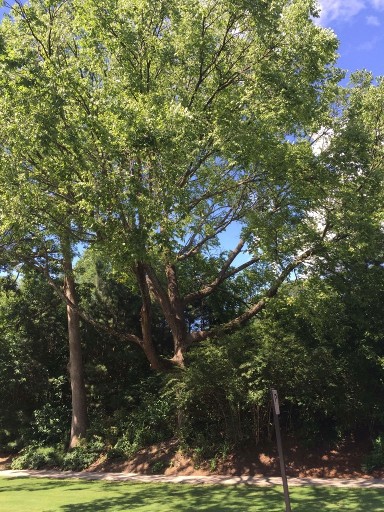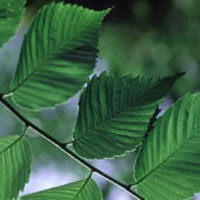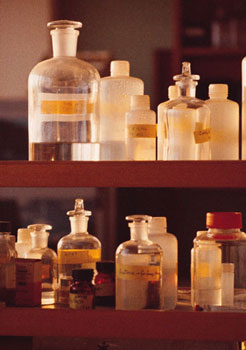Disclaimer: The information on curenaturally.org is intended to improve your knowledge about herbs and their benefits. Articles on this website are not intended to replace medical treatment from your doctor. Always consult your doctor before starting a new treatment regimen.
Page Update 10/02/2019
Herbs to Treat Irritable Bowel Disease
By Dr. Ashraf Girgis N.D.
What is IBD?
IBD is inflammatory bowel disease, very often confused with IBS (Irritable Bowel Syndrome).
While both have similar symptoms, they have different underlying causes. IBD is caused by
inflammation; as its name suggests, it pertains to continuous inflammation in the bowels is accompanied
by physical impairment as one of its symptoms. IBS, by contrast, is a chronic bowel disease caused by
food allergies, sensitivities, and irritations, as well as the overgrowth of candidate, infection, and
diets high in refined sugar.

Two diseases are included under the larger IBD category: Crohn’s disease and Ulcerative Colitis.
Both of these diseases are the result of inflammation. While in the case of Crohn’s inflammation
can occur anywhere in the GI tract, in the case of ulcerative colitis the inflammation is in the large
intestine. According to the Center for Disease Control (CDC), 3 million American adults suffered from
IBD in 2015 (1.3% of the total population). The mean hospitalization cost was $11,345 for Crohn’s
disease and $13,412 for ulcerative colitis.
Symptoms of IBD:
Symptoms including abdominal pain, diarrhea, gas, weight loss, fatigue, and low grade fever due to
bleeding anemia have all been noted among patients.
Although the causes of IBD are unknown, anything resulting in inflammation of the intestinal tract can
lead to IBD. This can be anything from food allergies to environmental triggers to hereditary reasons.
To treat IBD, it is important to consume a diet full of fiber, vitamins, and nutrients. I recommend following a
FODMAP diet. Elimination of all refined carbohydrates and greasy and spicy foods is crucial.
Make sure to consult an ND for appropriate diet and nutritional recommendations. Homeopathy and
stress management can both play very significant roles in treating IBD.
There are several herbs that have been used successfully in treating inflammation of the gut.
Below is information about each of them.

|
|
|
Aloe Vera (Aloe barbadebsis)
Aloe vera belongs to the Asphodelaceae (Liliaceae) family. Aloe Vera was used in ancient greater Iran and in the Mesopotamian region for healing wounds and skin problems dating back at least few thousands of year.. The Romans used it as a laxative, carminative, and anthelmintic (a substance used to expel parasitic intestinal worms). It is also grown in North Africa and Asia and has been used all over the world, including Egypt, India,
Mexico and China, among many other places.
Constituents
Aloe contain more than 75 active chemical constituents. It contains vitamins A, B12, C , and E in addition to 3% Saponins (soapy substances), amino acids, and enzymes such as bradykinase, aliiase, alkaline phosphatase, and amylase, among others. Aloe also contains minerals such as calcium, copper, magnesium, chromium,
selenium, manganese, potassium, sodium, and zinc. Additionally, it contains two plant hormones – auxins and gibberellins – that help with its anti-inflammatory effects. It also contains sugar and 4 plant steroids.
Aloe does have side effects.
|
 |
|
|
|
|
Side Effects
It is not recommended for use during pregnancy due to possible uterine contractions. In babies, it can cause gastrointestinal distress. People who have allergies or sensitivities to Liliaceae should avoid also avoid using aloe. It may also increase steroid cream absorptions.Use caution if you are on digoxin and diuretics such as Lasix drugs.
Finally, aloe can deplete potassium levels.Despite these side effects, aloe has powerful anti-inflammatory effects.
In a March 2004 study published by the Centre for Adult and Pediatric Gastroenterology, scientists concluded that “The anti-inflammatory actions of aloe vera gel in vitro provide support for the proposal that it may have a therapeutic effect in inflammatory bowel disease.” In another study of 44 patients
with IBD who took 100 mg of aloe vera orally. Scientists noticed very effective results in comparison to
the placebo group. No side effects were observed. In a third study, aloe vera was shown to be effective intreating gastric ulceration (Eamlamnam et al., 2006).
|

|
|
|
|
Slippery Elm (Ulmus ubro, ulmus fulvo)
Slippery Elm tree bark is known to have been used by American Indian tribes and was taken to Europe by European settlers. The inner bark was used for healing coughs, sore throats, and gastrointestinal ailments. Slippery elm is also called sweet elm and red elm.
The constituents of slippery elm are as follows: the inner bark contains mucilage, tannin. The outer bark contains iron, calcium, vitamin C, magnesium, and potassium, as well as glucose.
It was listed until 1960 in US. Pharmacopeia as an emollient (a non-cosmetic skin cream) as well as anantitussive (cough control). Slippery elm has several medicinal uses. Slippery elm is used to relieve symptoms of gastrointestinal disease. Its mucilage acts as a barrier preventing esophagus damage due to stomach acidity. It is well known for use in
patients with Crohn’s disease, peptic ulcers, and IBS. Slippery elm capsules are also used in treating diarrhea.The mucilage in slippery elm coats the surface of mucous membranes and wounds, thereby decreasing irritations. Slippery elm also has anti-inflammatory effects and is used as a poultice for boils, abscessesand ulcer.
|

|
|
|
|
|
Assiac tea is used by the Ojibwa tribe of Canada in treating a variety of conditions such as osteoporosis, high blood pressure, and cancer. Assiac tea is composed of three herbs (rhubarb, burdock root, and sheep sorrel) in addition to elm.You can also make tea with slippery elm by adding ½ - 2 grams to 200mg of water. Bring it to boil for 10 to 15 minutes, and drink it after cooling. For other types of use, follow the directions of your ND or herbalist, or the recommended dosage on the label. Recommended dosage for slippery elm is often one ortwo capsules of 150 mg before every meal. For external use, mix the powder with boiling water to make a poultice.
Side effects,
No side effects are known for slippery elm at this time, due to lack of research on its interaction with other medications. However, because of its strong mucilage effect, it may affect the absorption of other medications.
|
 |
|
|
|
|
Marshmallow (Althea Officinalis)
Marshmallow (althea Officinalis) is an herb which originated in Asia, Europe, and northern Africa. Its leaves and roots have been used since ancient times to sooth coughs and for urinary system health. Its leaves and roots are both used as a vegetable. Marshmallow is known to have anti-inflammatory effects. It reduces the severity of the inflammation,leading to the healing of wound.
Constituents
Marshmallow contains 25-35% mucilage, asparagine, tannins, pectin, and traces of essential oils. It also contain anti-oxidants such as phenolic acids, flavones and flavonols. Its roots are rich in polysaccharides.Marshmallow has several proven medicinal effects.
In an animal study done by Iranian scientists (Rezaei et al. 2015, https://www.ncbi.nlm.nih.gov/pmc/articles/PMC4418059) published in spring 2015, scientists concluded the following: “In the current study, we evaluated the antibacterial activity of Althaea officinalis L. hydroethanolic leaf extract and its wound healing potency in the rat model of excision wound creation. Hydroalchoholic extract of Althaea officinalis L. containing phytochemicals was capable of acting as antibiotic to kill gram-positive bacteria and can accelerate the wound healing processes as well.” However, the researchers also concluded that the anti-bacterial effects of marshmallow were not noted in gram negative bacteria.
|

|
|
|
|
|
Due its mucilage, marshmallow is used as an expectorant. It is known to have diuretic effects as well as being anti-inflammatory. Its mucilage effects are used as a digestive remedy, soothing inflamed tissue
inside the digestive system. Sometimes it is used on its own but is also often combined with slippery elm.Marshmallow is used in patients with Crohn’s disease to soothe the intestinal wall. In one study,marshmallow was used in combination with aloe and 47% of ulcerative colitis patients were relieved of their symptoms. This contrasts just 14% in the placebo group. 100 mL of aloe was used (approximately 3.5 ounces) twice a day for four weeks. Other ailments for which marshmallow is an effective remedy include gastritis, asthma, stomach irritations and acidity, and indigestion.
German Commission E suggests 1¼ tea spoon (about 6 grams) of root per day. To make a tea, add 2-3 spoon (about 10-15 grams) of root to 250 mL (a cup) of water.Drink tea 3-5 times a day. Marshmallow can be found in capsule and herbal extract forms.You can follow the instructions on the labeling.
Side effects,
In terms of side effects, marshmallow seems safe at the present time. No interaction with other medications or side effects have been reported. Other herbs that can be used in treating IBD are liquorish, Yarrow, Myrrh, Calendula.
Thanks for visiting curenaturally.org.
Ashraf Girgis,ND
|


|
References:
https://www.kew.org/science/data-and-resources/tools-and-services/medicinal-plant-names-services
https://www.researchgate.net/publication/275974963_Evaluation_of_the_antibacterial_activity_of_the_Althaea_officinalis_L_leaf_extract_and_its_wound_healing_potency_in_the_rat_model_of_excision_wound_creation
https://www.uofmhealth.org/health-library/hn-2128005
https://www.ncbi.nlm.nih.gov/pmc/articles/PMC4418059/
https://www.heal
https://inflammatoryboweldisease.net/what-is-crohns-disease/statistics/
https://www.aloecure.com/blog/aloe-vera-for-inflammation/
https://www.ncbi.nlm.nih.gov/pmc/articles/PMC2763764/
https://www.ncbi.nlm.nih.gov/pubmed/14987320
https://www.naturalmedicinejournal.com/journal/2012-09/aloe-vera-gel-research-review
http://oxfordmedicine.com/view/10.1093/med/9780199204854.001.1/med-9780199204854-chapter-1501
https://www.biology.lu.se/research/research-groups/animal-physiology/research-projects/gut-biology-group
https://www.theguardian.com/science/2014/feb/11/gut-biology-health-bacteria-future-medicine
https://www.vet.cornell.edu/news/20181106/researchers-explore-gut-biology-similarities-across-species-and-colleges
https://www.nature.com/articles/s42003-018-0221-5
https://www.ncbi.nlm.nih.gov/pmc/articles/PMC4987754/
https://www.ncbi.nlm.nih.gov/pmc/articles/PMC4735098/
thline.com/health/food-nutrition/marshmallow-root#skin
https://www.karger.com/Article/Abstract/88934
https://www.healthline.com/health/food-nutrition/marshmallow-root
Have Any Feedback For Our Article?
Let Us Know Below
|
|
|
|